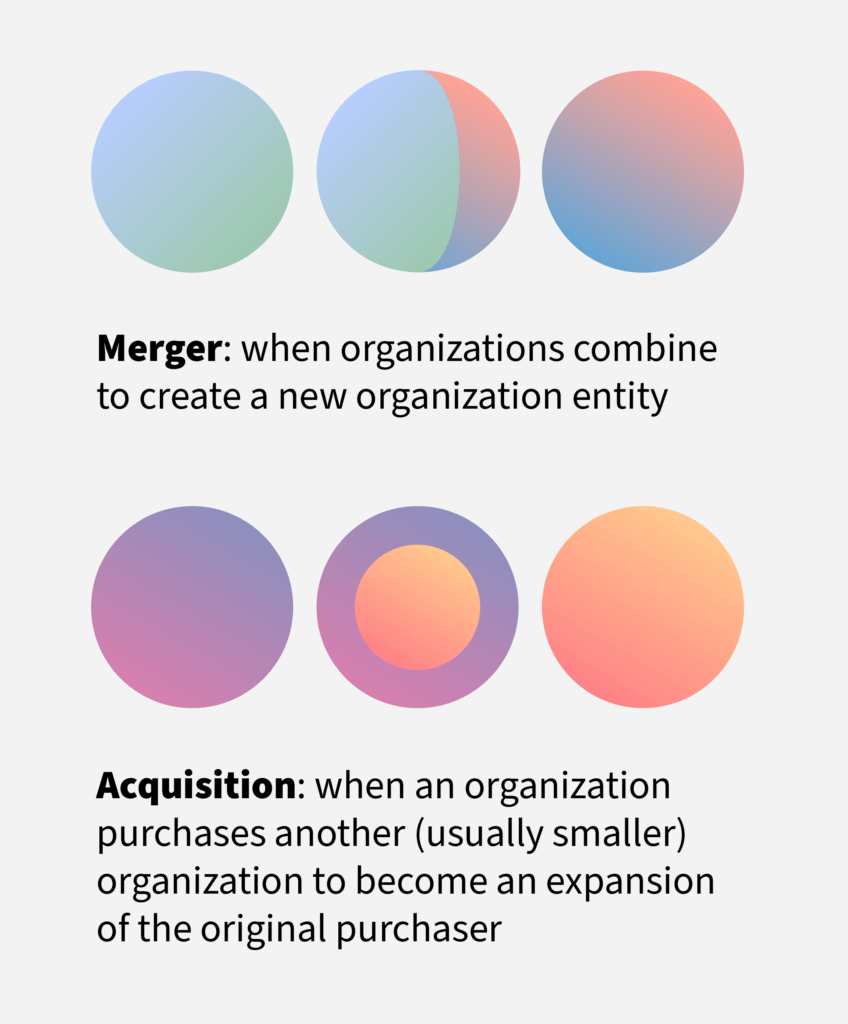
There are many reasons healthcare organizations undertake mergers and acquisitions (M&A), from consolidating and diversifying service offerings, increasing market share, and even earning economic gains. And M&A projects are never perfect or easy; in fact, between 70% and 90% of M&A’s fail to successfully complete or meet expectations. With such a large component of M&A’s focusing on Information Technology (IT) integrations and consolidations, it’s vital to know how to plan your M&A strategy to avoid pitfalls ahead of time, increasing your chances of a successful M&A.
[Check out the KLAS report – Divurgent M&A IT Services 2023]
Top 5 Healthcare IT Challenges During M&As
1. Maintaining Company Culture
A healthy company culture is arguably one of the most important components of a successful organization. Company culture is based on an organization’s unique set of values, goals, mission, and norms within the work environment. When one or more organizations come together, there will undoubtedly be differing cultures, each with their own unique set of expectations. Together, either organically or purposefully, they’ll form a new macro culture and incorporate a myriad of subcultures. If you don’t shape these merging cultures, or neglect culture all together, you’ll likely wind up with a failing culture that isn’t integrated, has low morale, and ultimately provides resistance to the IT activities during and after an M&A.
To overcome this challenge, you must intently and carefully build a cultural framework that shapes a new target culture. This work starts with analyzing the existing cultures of each organization and identifying their most valuable attributes – these will be the qualities that should be protected. Culture is driven primarily through an organization’s leaders, who should be shaping the target culture through storytelling, modeling behavior, and rewarding the target norms. Leaders should also be attentive towards anything that is not meeting the target norm . Be sure to align all leaders within the organization to this new framework and expectations before the M&A begins for the best chance of success.
2. Completing All IT System Integrations
The integration of IT systems is one of the most complex components of a merger or acquisition. Integrating IT systems and applications during an M&A can also differ greatly from a typical system integration effort, as it’s now a part of a new and much larger business goal that unfolds over a significant timeline.
During this timeline, there will be new strategic initiatives, new shiny objects to marvel at, and pushes that will move past the M&A and prioritize new projects. The IT component of an M&A project often fails to fully integrate all systems together, especially when the focus is spent only on major applications, such as the EHR and ERP systems. This can either leave the smaller systems unable to talk with each other or leaves the redundant technologies to remain across the merged enterprise. With this, application bloat occurs, and the larger enterprise continuing to pay for unnecessary applications.
To overcome, you must begin the M&A project with a full road-mapped plan – don’t begin your project with an “address it down the road” mentality. To create a smooth and speedy integration process, determine which systems and data you should keep before the M&A begins. With this scope, develop a timeline and roadmap that produces the least disruption, the least throw-away transition work, and a path to a complete system IT integration. Setting expectations with the IT department prior to the M&A can allow them to focus on and protect the correct systems and applications, as well as plan for archiving and decommissioning those that are not in the long-term plans.
3. Getting Transparent Communication from Executives
Often during M&As, there is a grave lack of communication within the organization from top executives and leaders. This can be due to many factors, including time restraints, having not previously created a communication strategy, or even having a fear of losing your high-performing talent during the merger or acquisition. As a result, and with no ill-intention, employees and users begin making their own conclusions as a way to solve their own issues or direct their own fate.
This can lead to further confusion and distrust in the workplace not only between employees and users, but towards the organization as well. A lack of communication becomes a catalyst for rumors. And in a world where technologies and platforms are essential to the functions across an organization, if the communication surrounding IT integrations fail, so can the IT integrations themselves.
To overcome, you must create a strategy for a transparent line of communication through multiple channels, spanning from the highest executive to frontline employees. The goal is to stay ahead of and address any potential rumors, confusion, and issues by communicating openly with the organization on a regular basis. Communication must also be two-way. Allow your staff to ask questions and your organization should post the answers to these questions in a public forum.
4. Handling Employee Resistance of Change Management
Even if an IT M&A project is well-planned, employee resistance to changes can impede or destroy these IT integration efforts. Employee uncertainties and their resistance to change, especially during something as large as an M&A, are normal reactions and should be expected by leaders. Fears of how an M&A will affect an employee’s current position and responsibilities, as well as that of a coworker’s, can create a reactive resistance to change. This resistance can result in reduced productivity, low morale, and increased turnover.
To overcome, the organization collectively must get through the fear of change. First, executives should plan for a formal change management program that includes sharing goals and objectives in a transparent way. Next, leaders should be providing education to employees about these future organizational changes and goals, as well as communicating with employees that it’s normal for these feelings and emotions to occur during changes. To dampen the fear of change, create a supportive environment where communication is welcome, and be sure employees continue to have a clear understanding and sense of direction for where the changing organization will take them.
5. Having a Single Point of Programmatic Governance
With numerous activities and changes happening during an M&A, it’s important to have an overarching program and program director acting as a single point of management that can coordinate departments and service lines throughout these often difficult to navigate processes.
Every M&A is a complex combination of multiple projects that all must fit together and be driven to completion. This overarching governance can serve as a single point for IT issue and risk management with a visibility to how these elements affect multiple projects within the M&A program. Not having a proper single point of management or governance strategy will create a lack of accountability, leaving these departments and service lines left on their own for coordination. This can result in departments creating widespread misalignments, inconsistencies of business goals, failed integrations, and executive direction or decisions not being followed.
To overcome this, plan for a single point of management prior to beginning the IT M&A project. It’s imperative to have good governance at the highest level. A governance structure with a steering committee representative of the major stakeholders provides a clear “one-stop-shop” for program-level decisions. Departmental or service line subcommittees can feed into the steering committee and make appropriate decisions for their respective levels. A governing body that is not making a decision, not saying no to scope creep, or not supporting the decisions is just as bad as having no governance at all. Discipline within the steering committee and at all levels of governance are critical to keeping all projects and the program on-track and on budget.
There’s a clear, reoccurring trend that to overcome these challenges an organization must build a comprehensive plan from the very beginning, and before the M&A starts. During the project planning period, it’s vital to create strategies that ensure these challenges do not get overlooked. By recognizing and planning for these challenges earlier, your M&A initiatives will result in smoother transitions. When healthcare organizations are searching for an IT solutions provider to help guide them through the M&A process, it’s important to search for one whose service offering addresses all the above challenges.
Last Modified: 11/14/2023
Merge your organization with confidence.
Experience a seamless M&A transition with high dollar cost savings.

Meet the Author

Amanda Sorg | Copywriter & Content Manager
Amanda Sorg is the Copy & Content Manager at Divurgent, where she orchestrates impactful and meaningful content that bridges clients to the heart of the Divurgent community. She received her Bachelor of Arts degree in Psychology and Anthropology from the University of North Florida, holds certifications in Digital and Content Marketing, and has been a valued Team member of Divurgent since 2022. To learn more about Amanda, visit her on LinkedIn.


